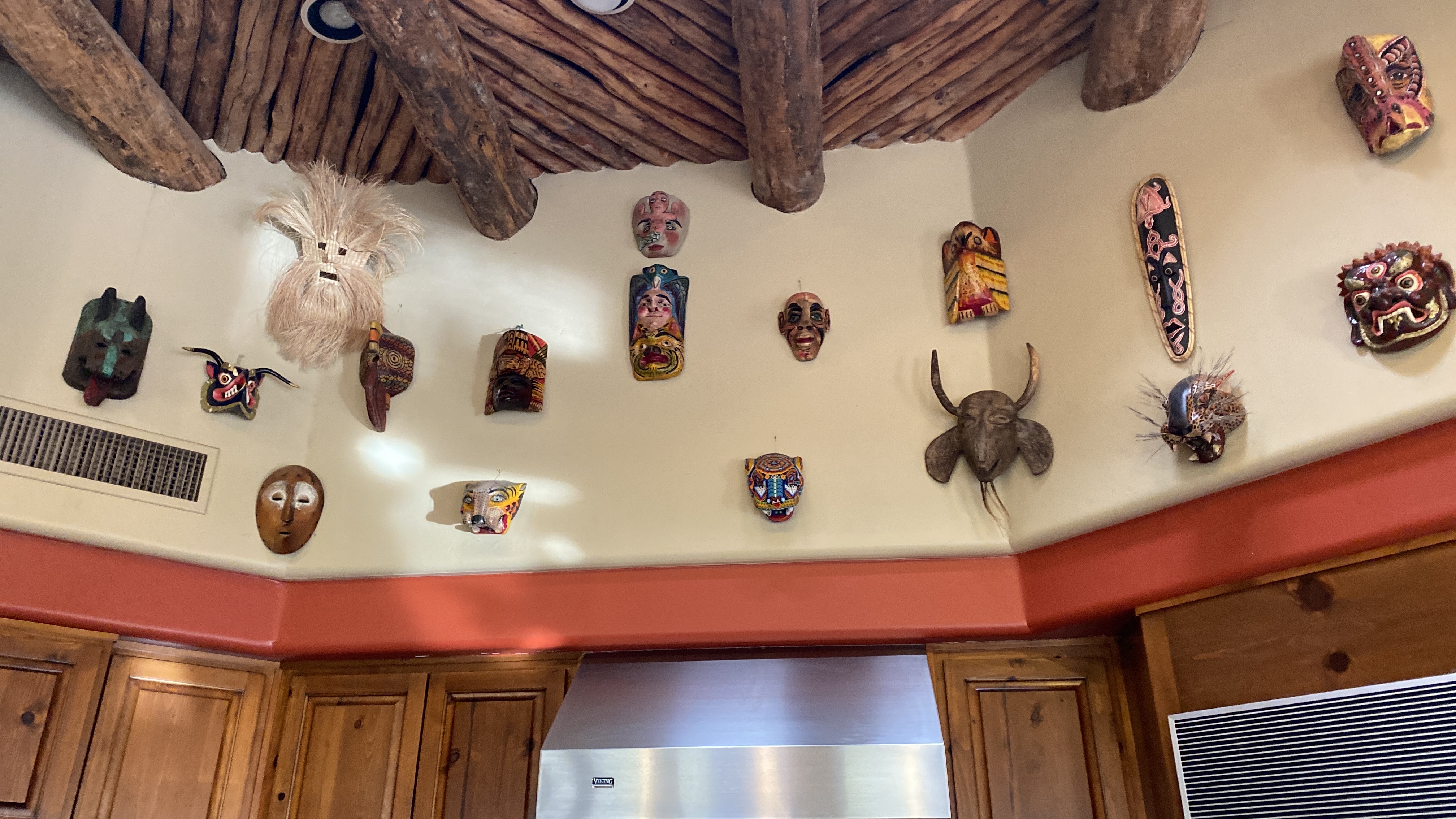I’m not one who is fond of wearing masks.
I have hearing aids and I wear glasses, and those two do not coordinate well with the little elastic bands on my mask, which want to bend my ears out into a Dumbo look, and often just snap off my ear, turning my mask into a slingshot. At that point, both hearing aids are usually dangling from some lock of hair, this usually being in the middle of the grocery store.
The only way through, after a few deep breaths, is to take the glasses off, put the hearing aids back in, don the mask again, and then try to fit the glasses gingerly over the whole arrangement.
This does not leave me in a gracious mood concerning the necessity of wearing a mask. So, like most of us in the middle of The Great Divide, I do have some compassion for non-mask-wearers. I hate wearing them too.
One day recently, I glanced up at my own kitchen wall. That’s where we display the collection of ceremonial masks from countries we’ve been fortunate enough to visit during our long lives. Represented in the photo above, you’ll see touches of Mexico, Costa Rica, Guatemala, Peru, Africa, as well as Arizona, which is home. Virtually every culture on the globe has ancient traditions where masks have been used.
These masks are more than decoration. They were all made for ritual and ceremony. They represent animals, ancestral spirits, gods—and aspects of ourselves we don’t always see when we look in the mirror.
Check out this article about Chris Rainer, a photographer who has documented masks used by shamans and ceremonialists to connect with the spirit world. Our Halloween is about our only link to an ancient tradition of masked ceremonies for connection with the other side.
Arizona’s native populations provide opportunities to see mask wearers dancing in sacred ceremony. We’ve been lucky enough to witness Kachina dancers on Hopi, and the masked dancing on the Pascua Yaqui reservation during Holy Week.
To me, these dances illustrate human struggles with forces within us that often seem out of control and mysterious. They portray our attempts to dance with our own frailties, with our own versions of evil, and to dance with the reality that death is a part of life.
Having been captured by the beauty and meaning of masks, I find it interesting that right now we’re being asked to wear them to protect us from a pandemic. Could this have a deeper meaning? Or a deeper opportunity?
When ritual dancers participate in ceremony for hours, this requires discipline and courage. They may be dancing in heat or cold or dust or rain, without food and water. They may not be able to see or breathe easily with a mask that might be heavy. They might even be afraid that the spirit the mask represents could take them over. They leave their own personality behind and embody the spirit. They take time out of their lives, often to train to be in the ritual, and then perform it. Sometimes at the end of the dance, all the masks that have taken hours to create are burned. This all takes humility.
They do all this because mask rituals are transformative.
People who refuse to wear masks during the pandemic say they feel it’s their right to choose. They don’t want to be told what to do. Are they missing the point? Are they missing an opportunity to learn humility?
Why are we being asked to put our own will aside, to cover part of our face that is our identity? It is to protect the greater good, to protect not just ourselves, but to care for each other.
When you see people on the street or in the grocery store, all wearing masks, in a way, we all look alike. We are all alike—we are all human. All vulnerable. All in danger of the pandemic taking us over. So in a way, our masks connect us. We’re all facing this together.
Is it hard to admit that nature is more powerful than we are? Hard to admit that we struggle with anger and fear and resentment? Could this be a flaw in our culture? In our nature?
Let’s hope it’s not a fatal flaw.
I invite you to join me in thinking more deeply about the significance of the mask at this point in our history, in our common lives. And about the significance of the Great Divide over wearing them. I welcome your comments!
And, I invite you to try an adventure. The next time you go out and put on a mask, try treating the whole thing as a sacred act, a ritual of sorts. I’ll do it if you will—even if it means having the whole thing fall apart, leaving me feeling…human.


 Share on bsky
Share on bsky





Read 13 comments and reply